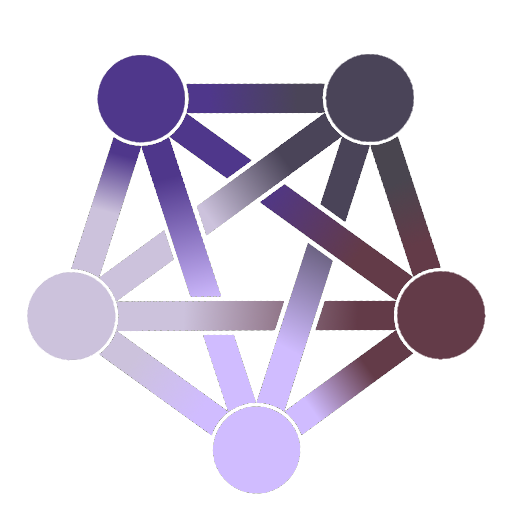There were a number of exciting announcements from Apple at WWDC 2024, from macOS Sequoia to Apple Intelligence. However, a subtle addition to Xcode 16 — the development environment for Apple platforms, like iOS and macOS — is a feature called Predictive Code Completion. Unfortunately, if you bought into Apple’s claim that 8GB of unified memory was enough for base-model Apple silicon Macs, you won’t be able to use it. There’s a memory requirement for Predictive Code Completion in Xcode 16, and it’s the closest thing we’ll get from Apple to an admission that 8GB of memory isn’t really enough for a new Mac in 2024.
And now all the fan boys and girls will go out and buy another MacBook. That’s planned obsolescence for ya
Someone who is buying a MacBook with the minimum specs probably isn’t the same person that’s going to run out and buy another one to get one specific feature in Xcode. Not trying to defend Apple here, but if you were a developer who would care about this, you probably would have paid for the upgrade when you bought it in the first place (or couldn’t afford it then or now).
Well no, not this specific scenario, because of course devs will generally buy machines with more RAM.
But there are definitely people who will buy an 8GB Apple laptop, run into performance issues, then think “oh I must need to buy a new MacBook”.
If Apple didn’t purposely manufacture ewaste-tier 8GB laptops, that would be minimised.
I wouldn’t be so sure. I feel like many people would not buy another MacBook if it were to feel a lot slower after just a few years.
This feels like short term gains vs. long term reputation.
And why they solder the RAM, or even worse make it part of the SoC.
There are real world performance benefits to ram being as close as possible to the CPU, so it’s not entirely without merit. But that’s what CAMM modules are for.
But do those benefits outweigh doubling or tripling the amount of RAM by simply inserting another stick that you can buy for dozens of dollars?
That’s extremely dependent on the use case, but in my opinion, generally no. However CAMM has been released as an official JEDEC interface and does a good job at being a middle ground between repairability and speed.
It’s an officially recognized spec, so Apple will ignore it as long as they can. Until they can find a way to make money from it or spin marketing as if it’s some miraculous new invention of theirs, for something that should just be how it’s done.
Parts pairing will do. That’s what Apple known for, knee capping consumer rights.
Yes, there are massive advantages. It’s basically what makes unified memory possible on modern Macs. Especially with all the interest in AI nowadays, you really don’t want a machine with a discrete GPU/VRAM, a discrete NPU, etc.
Take for example a modern high-end PC with an RTX 4090. Those only have 24GB VRAM and that VRAM is only accessible through the (relatively slow) PCIe bus. AI models can get really big, and 24GB can be too little for the bigger models. You can spec an M2 Ultra with 192GB RAM and almost all of it is accessible by the GPU directly. Even better, the GPU can access that without any need for copying data back and forth over the PCIe bus, so literally 0 overhead.
The advantages of this multiply when you have more dedicated silicon. For example: if you have an NPU, that can use the same memory pool and access the same shared data as the CPU and GPU with no overhead. The M series also have dedicated video encoder/decoder hardware, which again can access the unified memory with zero overhead.
For example: you could have an application that replaces the background on a video using AI. It takes a video, decompresses it using the video decoder , the decompressed video frames are immediately available to all other components. The GPU can then be used to pre-process the frames, the NPU can use the processed frames as input to some AI model and generate a new frame and the video encoder can immediately access that result and compress it into a new video file.
The overhead of just copying data for such an operation on a system with non-unified memory would be huge. That’s why I think that the AI revolution is going to be one of the driving factors in killing systems with non-unified memory architectures, at least for end-user devices.
That’s a fantastic explanation! Thank you!
I feel like this is an arguement for new specialized computers at best. At worst it shows that this AI crap is even more harmful to the end user.
Bus goes Vrrrroom vrrooom. Fuck AI.
And even if the out-of-the-box RAM is soldered to the machine, it should still be possible to add supplementary RAM that isn’t soldered for when the system demands it. Other computers have worked like this in the past with chip RAM but a socket to add more.
It’s highly dependent on the application.
For instance, I could absolutely see having certain models with LPCAMM expandability as a great move for Apple, particularly in the pro segment, so they’re not capped by whatever they can cram into their monolithic SoCs. But for most consumer (that is, non-engineer/non-developer users) applications, I don’t see them making it expandable.
Or more succinctly: they should absolutely put LPCAMM in the next generation of MBPs, in my opinion.
Apple’s SoC long predates CAMM.
Dell first showed off CAMM in 2022, and it only became JEDEC standardised in December 2023.
That said, if Dell can create a really good memory standard and get JEDEC to make it an industry standard, so can Apple. They just chose not to.
In this particular case the RAM is part of the chip as an attempt to squeeze more performance. Nowadays, processors have become too fast but it’s useless if the rest of the components don’t catch up. The traditional memory architecture has become a bottleneck the same way HDDs were before the introduction of SSDs.
You’ll see this same trend extend to Windows laptops as they shift to Snapdragon processors too.
People do like to downplay this, but SoC is the future. There’s no way to get performance over a system bus anymore.
There is. It’s called CAMM.
Funny that within one minute, they state the exact same problem.
If you actually watch past the first minute of the video, they explain that LPCAMM solves that problem…
deleted by creator
BUT BUT you’ll get 5% fasTEr SpeED!!! And MOrE seCuRiTy!!!
Well. The claim they made still holds true, despit how I dislike this design choice. It is faster, and more secure (though attacks on NAND chips are hard and require high skill levels that most attacker won’t posses).
And add one more: it saves power when using LPDDR5 rather DDR5. To a laptop that battery life matters a lot, I agree that’s important. However, I have no idea how much standby or active time it gain by using LPDDR5.
And the apple haters will keep making this exact same comment on every post using their 3rd laptop in ten years while I’m still using my 2014 MacBook daily with no issues.
Be more original.
Nice attempt to justify planned obsolescence. To think apple hasn’t done this time and time again, you’d have to be a fool
👍
-posted from my ten year old MacBook which shows no need for replacement
And is what, 3 or 4 operating systems behind due to it being obsolete
At which point did Apple decide your MacBook was too old to be usable and stop giving updates or allow new software to run on it?
Still gets security updates. All the software I need to run on it runs on it.
My email, desktop, and calendar all still sync with my newer desktop. I can still play StarCraft. I can join zoom meetings while running Roll 20. I can even run Premiere and do video editing… to a point.
I guess if you need the latest and greatest then you might have a point, but I don’t.
This whole thread is bitching about software bloat and Apple does that to stop the software bloat on older machines, but noooo that’s planned obsolescence. 🙄
They will keep making the same comment as long as it keeps being true.
- Typed from my 2009 ThinkPad
Meanwhile your 2014 MacBook stopped receiving OS updates 3 years ago.
Weren’t you just complaining about software bloat?
…no?
This is pretty much it. People really just want to find reasons to hate Apple over the past 2 - 3 years. You’re right, though, your Mac can run easily for 10+ years. You’re good basically until the web browsers no longer support your OS version, which is more in the 12-15 year range.
In fairness, most computers built after around 2014-2016+ last way longer, performance started to level off not long after that. After all, devs write software for what people have, if everyone had 128 gigs of RAM we’d load everything we could think of into memory and you’d need it to keep up
Macs did have some incredible build quality though, the newer ones aren’t holding up even close to as well. I’m still using a couple 2012 Macs to play videos, it’s slow as hell when you interact, but once the video is playing it still looks and sounds good
I still have a fully functioning Windows 95 machine.
My daily driver desktop is also from around 2014.
That’s pretty sick actually
These were obsolete the minute they were made, though… So it’s not really planned obsolescence. I got one for free (MacBook Air), and it’s always been trash.
I have an M2 MBA and it’s the best laptop I’ve ever owned or used, second to the M3 Max MBP I get to use for work. Silent, battery lasts all week, interface is fast and runs all my dev tools like a charm. Zero issues with the device.
This isn’t a big deal.
If you’re developing in Xcode, you did not buy an 8GB Mac in the last 10-years.
If you are just using your Mac for Facebook and email, I don’t think you know what RAM is.
If you know what RAM is, and you bought an 8GB Mac in the last 10-years, then you are likely self-aware of your limited demands and/or made an informed compromise.
If you know what RAM is, and you bought an 8GB Mac in the last 10-years, then you are likely self-aware of your limited demands and/or made an informed compromise.
Or you simply refuse to pay $200+ to get a proper machine. Like seriously, 8GB Mac’s should have disappeared long ago, but nope, Apple stick to them with their planned obsolescence tactics on their hardware, and stubbornly refusing to admit that in 2023 releasing a MacBook with soldered 8Gb of RAM is wholy inadequate.
I get around this by simply not buying a Mac. Free’s up so much money for ram.
Yeah, the 8GB model’s purpose is to make an “starting at $xxxx” price tag possible.
deleted by creator
I’m not gonna stand up and declare that 8gb is absolutely fine, because in very short order it won’t be. But yeah, currently for an average use case, it is.
My work Mac mini has 8gb. It’s a 2014 so can’t be upgraded, but for the tasks I ask of it it’s ok. Sure, it gets sluggish if I’m using the Win11 VM I sometimes need, but generally I don’t really have any issues doing regular office tasks.
That said, I sometimes gets a bee in my bonnet about it, so open Activity Monitor to see what’s it’s doing, and am shocked by how much RAM some websites consume in open tabs in Safari.
8gb is generally ok on low end gear, but devs are working very hard to ensure that it’s not.
Funny: knowing that you only get one shot, I bought 32GB of RAM for my Mac Mini like 1.5 years ago. I figured that it gave me the best shot of keeping it usable past 5 years.
imagine showing this post to someone in 1995
shit has gotten too bloated these days. i mean even in my head 8GB still sounds like ‘a lot’ of RAM and 16GB feels extravagant
I still can’t fully accept that 1GB is not normal, 2GB is not very good, and 4GB is not all you ever gonna need.
If only it got bloated for some good reasons.
I remember when I got my first computer with 1GB of RAM, where my previous computer had 64MB, later upgraded to 192MB. And there were only like 3 or 4 years in between them.
It was like: holy shit, now I can put all the things in RAM. I will never run out.
The moment you use a file that is bigger than 1GB, that computer will explode.
Some of us do more than just browse Lemmy.
Wow. Have you ever considered how people were working with files bigger than total RAM they had in the normal days of computing?
So in your opinion if you have 2GB+ of a log file, editing it you should have 2GB RAM occupied?
I just have no words, the ignorance.
High quality content is the reason. Sit in a terminal and your memory usage will be low.
So we’re just going to ignore stuff like Electron, unoptimized assets, etc… Basically every other known problem… Yeah let’s just ignore all that
Is Electron that bad? Really? I have Slack open right now with two servers and it takes around 350MB of RAM. Not that bad, considering that every other colleague thinks that posting dumb shit GIFs into work chats is cool. That’s definitely nowhere close to Firefox, Chrome and WebStorm eating multiple gigs each.
Yes, it really is that bad. 350 MBs of RAM for something that could otherwise have taken less than 100? That isn’t bad to you? And also, it’s not just RAM. It’s every resource, including CPU, which is especially bad with Electron.
I don’t really mind Electron myself because I have enough resources. But pretending the lack of optimization isn’t a real problem is just not right.
First of all, 350MB is a drop in a bucket. But what’s more important is performance, because it affects things like power consumption, carbon emissions, etc. I’d rather see Slack “eating” one gig of RAM and running smoothly on a single E core below boost clocks with pretty much zero CPU use. That’s the whole point of having fast memory - so you can cache and pre-render as much as possible and leave it rest statically in memory.
CPU usage is famously terrible with Electron, which i also pointed out in the comment you’re replying to. But yes, having multiple chromium instances running for each “app” is terrible
First of all, 350MB is a drop in a bucket
People don’t run just a single app in their machines. If we triple ram usage of several apps, it results in a massive increase. That’s how bloat happens, it’s a cumulative increase on everything. If we analyze single cases, we could say that they’re not that bad individually, but the end result is the necessity for a constant and fast increase in hardware resources.
Just wanted to point out that the number 1 performance blocker in the CPU is memory. In the general case, if you’re wasting memory, you’re wasting CPU. These two things really cannot be talked about in isolation.
When (according to about:unloads) my average firefox tab is 70-230MB depending on what it is and how old the tab is (youtube tabs for example bloat up the longer they are open), a chat app using over 350 is a pretty big deal
just checked, my firefox is using 4.5gb of RAM, while telegram is using 2.3, while minimized to the system tray, granted Telegram doesnt use electron, but this is a trend across lots of programs and Electron is a big enough offender I avoid apps using it. When I get off shift I can launch discord and check it too, but it is usually bad enough I close it entirely when not in use
It sure is. I’m running ferdium at this very moment with 3 chat apps open, and it consumes almost a gigabyte for something that could take just a few megabytes.
What’s wrong with using Gifs in work chat lmao, can laugh or smile while hating your job like the rest of us.
Get a better job.
256MB or 512MB was fine for high-quality content in 2002, what was that then.
Suppose the amount of pixels and everything quadrupled - OK, then 2GB it is.
But 4GB being not enough? Do you realize what 4GB is?
They didn’t just quadruple. They’re orders of magnitude higher these days. So content is a real thing.
But that’s not what’s actually being discussed here, memory usage these days is much more of a problem caused by bad practices rather than just content.
I know. BTW, if something is done in an order of magnitude less efficient way than it could and it did, one might consider it a result of intentional policy aimed at neutering development. Just not clear whose. There are fewer corporations affecting this than big governments, and those are capable of reaching consensus from time to time. So not a conspiracy theory.
One frame for a 4K monitor takes 33MB of memory. You need three of them for triple buffering used back in 2002, so half of your 256MB went to simply displaying a bloody UI. But there’s more! Today we’re using viewport composition, so the more apps you run, the more memory you need just to display the UI. Now this is what OS will use to render the final result, but your app will use additional memory for high res icons, fonts, photos, videos, etc. 4GB today is nothing.
I can tell you an anecdote. My partner was making a set of photo collages, about 7 art works to be printed in large format (think 5m+ per side). So 7 photo collages with source material saved on an external drive took 500 gigs. Tell me more about 256MB, lol.
Yes, you wouldn’t have 4K in 2002.
4GB today is nothing.
My normal usage would be kinda strained with it, but possible.
$ free -h total used free shared buff/cache available Mem: 17Gi 3,1Gi 11Gi 322Mi 3,0Gi 14Gi Swap: 2,0Gi 0B 2,0Gi $I can do a cold boot and show you empty RAM as well. So fucking what?
It’s not a cold boot and it’s not empty.
I chalk it up to lazy rushed development. Good code is art.
That’s not true at all. The code doesn’t take much space. The content does. Your high quality high res photos, 4K HDR videos, lossless 96kHz audio, etc.
But there are lots of shortcuts now. Asset packs and coding environments that come bundled with all kinds of things you don’t need. People import packages that consume a lot of space to use one tiny piece of it.
To be clear, I’m not talking about videos and images. You’d have these either way.
All these packages don’t take much memory. Also tree shaking is a thing. For example, one of the projects I currently work on has over 5 gigs of dependencies, but once I compile it for production, the whole code based is mere 3 megs and that’s including inlined styles and icons. The code itself is pretty much non-existent.
On the other hand I have 100KB of text translations just for the English language alone. Because there’s shit loads of text. And over 100MB of images, which are part of the build. And then there’s a remote storage with gigabytes of documents.
Even if I double the code base by copy pasting it will be a drop in a bucket.
I have a VPS that uses 1GB of RAM, it has 6-7 apps running in docker containers which isn’t the most ram efficient method of running apps.
A light OS really helps, plus the most used app that uses a lot of RAM actually reduce their consumption if needed, but use more when memory is free, the web browser. On one computer I have chrome running with some hundreds of MB used, instead of the usual GBs because RAM is running out.
So it appears that memory is full,but you can actually have a bit more memory available that is “hidden”
Same here. When idle, the apps basically consume nothing. If they are just a webserver that calls to some PHP script, it basically takes no RAM at all when idle, and some RAM when actually used.
Websites and phone apps are such an unoptimized pieces if garbage that they are the sole reason for high RAM requirements. Also lots of background bloatware.
This is resource reservation, it happens at an OS level. If chrome is using what appears to be alot of ram, it will be freed up once either the OS or another application requires it.
It just exists so that an application knows that if it needs that resource it can use X amount for now.
Absolutely.
Bad, rushed software that wires together 200 different giant libraries just to use a fraction of them and then run it in a sandboxed container with three daemons it needs for some reason doesn’t mean “8 Gb isn’t enough”, it means write tighter, better software.
deleted by creator
You just have to watch your favorite tablet get slower year after year to understand that a lot of this is artificial. They could make applications that don’t need those resources but would never do so.
Guy from '95: “I bet it’s lightning fast though…”
No dude. It peaks pretty soon. In my time, Microsoft is touting a chat program that starts in under 10 seconds. And they’re genuinely proud of it.
And latency is more shit than it ever was
We measure success by how many GB’s we have consumed when the only keys depressed from power on to desktop is our password. This shit right here is the real issue.
I once went for lower CAS timing 2x 128MB ram sticks (256 MB) instead of 2x 256s with slower speeds because I thought 512MB was insane overkill. Realized how wrong I was when trying to play Star Wars galaxies mmorpg when a lot of people were on the screen it started swapping to disk. Look up the specs for an IBM Aptiva, first computer my parents bought, and you’ll understand how 512MB can seem like a lot.
Now my current computer has 64 GB (most gaming computers go for 32GB) at the time I built it. My workstation at work has 128GB which really isn’t even enough for some workloads we have that use a lot of in-memory cache… And large servers can have multiple TB of RAM. My mind has been blown multiple times.
You can always switch to a text based terminal and free up your memory. Just don’t compain that YouTube doesn’t play 4K videos anymore.
Just don’t compain that YouTube doesn’t play 4K videos anymore.
strange, mpv handles it just fine
MPV doesn’t work in terminal (well, technically it does, but what’s the point of 4K HDR video in ASCII mode?). Please don’t confuse terminal emulator in GUI mode with a real text mode terminal.
The point is that your example use case of “YouTube 4k videos” doesn’t need a browser full of bloated js garbage.
The point is that MPV will use shitloads of memory too.
Actually lot less than the browser. Under 300MB, I just checked, and that’s mostly just the network buffer which is 150MB by default.
That’s about what my Slack is using, while being written in Electron, lol. Oh, you people…
KMSDRM is in terminal enough for me. Fbcon too.
EDIT: obviously not dummy terminal over UART or like that.
Opens chrome on a 8GB Mac. Sees lifespan of SSD being reduced by 50%. After 2-3 years of heavy usage SSD starts to get errors. Apple solution: buy a new one. No wonder they are 2nd/3rd wealthiest company on the planet.
buy a new one.
Buy a new SSD and swap out the old one?
…buy a new SSD, right??
SSD is soldered to the board. With only 8GB you’ll be using the swap partiton a lot so for anything exceeding 8GB of RAM you will be using the SSD as a slower “RAM” which will wear it’s lifespan down by constantly writing/reading into it’ s swap partition.
“tHATs nOT tRuE the aRCHiteCTuRe iS cOmPlETlY dIffErEnT!!!1!11!!ONEONE!!!” <— Apple fanboys when this was predicted on launch of the M1 🤖
No you don’t understand the architecture is different and so the laws of physics don’t apply. Constantly energizing and de-energizing capacitors can only increase life expectancy, everyone knows that.
The only people more cultish than Apple fans are Tesla/Elongated Muskrat fans.
You don’t get the most valuable company by selling a SSD. So, yeah a new Mac of course.
Well they do charge particularly hard for SSDs as well. They’ve found a way to eat the cake twice.
I think SSDs are also soldered to the mainboard on most apple products.
The Mac Studio uses a standard NVMe SSD but if you replace it with anything that you didn’t buy from Apple with a 500%+ markup, the new drive simply won’t work.
Oh, my sweet summer child…

Nah ur nat doin that with apple. Cmon just buy a new PC! Wa don car abt the env! Who cares anyway! Cmon not that expensive
deleted by creator
They moved to on-die RAM for a reason: To nickel and dime yo ass.
I needed to expense a Mac Mini for iOS development, and everyone (Me, the company, our purchasing department) was baffled at how much it cost to get 16 GB. And they only go up to 24GB. Imagine how much they’ll charge for 32 in a year!
It’s technically a bit faster, but yeah, I think charging more is the bigger motivation.
Companies primarily make decisions to maximise the profitability of someone and it’s never the consumer.
It’s a bit first but if their primary motivation was performance improvements they wouldn’t be soldering 16 GB.
If you’re going to weld shoes to your feet, you better at least make sure that they’re good shoes.
Why not? There is a performance benefit to being closer to the CPU, and soldering gets you a lot closer to the CPU. That’s a fact.
Yeah but if you’re only putting 8 GB of RAM on then you’re also going to be constantly querying the hard drive. So any performance gain you get from soldering, is lost by going all the way to the hard drive every 3 microseconds.
It’s only better performance on paper in reality there’s no real benefit. If you can run an application entirely entirely within the 8 GB of RAM, and assuming you’re not running anything else, then maybe you get better performance.
And that’s the idea. Soldering memory is an engineering decision. How much to solder is a marketing decision. Since users can’t easily add more, marketing can upsell on more RAM.
It’s not “on paper,” the RAM itself is performing better vs socketed RAM. Whether the system runs better depends on the configuration, as in, did you order enough RAM.
I can’t tell if you’re a stooge or if you really think that. I hope you are stooge, because otherwise that’s a really stupid position you’ve decided to take and you clearly don’t actually understand the issue.
I’m pretty sure I do understand the issue. Here are some facts (and an article to back it up):
- putting memory closer to the CPU improves performance due to less latency - from 96GB/s -> 200 (M1) or 400 (M1 Max) GB/s
- customers can’t easily solder on more RAM
- Apple’s RAM upgrades are way more expensive than socketed options on the market
And here’s my interpretation/guesses:
- marketing sees 1 & 2, and sees an opportunity to do more of 3
- marketing probably asked engineering what the bare minimum is, and they probably said 8GB (assuming web browsing and whatnot only), though 16GB is preferable (that’s what I’d answer)
- marketing sets the minimum @ 8GB, banking on most users who need more than the basics to buy more, or for users to buy another laptop sooner when they realize they ran out of RAM (getting after-sale RAM upgrades is expensive)
So:
- using soldered RAM is an engineering decision due to improved performance (double socketed RAM w/ Intel on M1, quadruple on M1 Max)
- limiting RAM to 8GB is a marketing decision
- if you don’t have enough RAM, that doesn’t mean the RAM isn’t performing well, it means you don’t have enough RAM
Using socketed RAM won’t fix performance issues related to running out of RAM, that issue is the same regardless. Only adding RAM will fix those performance issues, and Apple could just as easily make “special” RAM so you can’t buy socketed RAM on the regular market anyway (e.g. they’d need a different memory standard anyway due to Unified Memory).
I have hated Apple’s memory pricing for decades now, it has always been way more expensive to add RAM to an Apple device at order time vs PC competitors (I still add my own RAM to laptops, but it’s usually way cheaper through HP, Lenovo, etc than Apple at build-time). I’m not defending them here, I’m merely saying that the decision to use soldered RAM makes a lot of engineering sense, especially with the new Unified Memory architecture they’re using in the M-series devices.
Sounds like one of those rare cases where engineering and marketing might agree on something.
Mac Mini is meant to be sort of the starter desktop. For higher end uses, they want you on the Mac Studio, an iMac, or a Mac Pro.
I assumed that the Mini was the effectively a Mac without a monitor. Is it relatively underpowered too?
As far as I understand, the Mac lineup don’t have screens, the IMacs are stationary and do have a screen, the MacBooks are the laptops.
Its not underpowered for average users, but it’s not meant for professional uses beyond basic office work.
Similar to the mini they offer the Studio which doesn’t have a monitor built in https://www.apple.com/mac-mini/compare/?modelList=Mac-studio-2023,Mac-mini-M2
Then for the higher end uses they offer a more typical tower format https://www.apple.com/mac-pro/
But would an M1 Mini be similar to an M1 iMac?
Why do they struggle so much with some “obvious things” sometimes ? We wouldn’t have a type-C iphone if the EU didn’t pressured them to do make the switch
They don’t “struggle”. They are intentional and malicious decisions meant to drive revenue, as they have been since the beginning.
The E-Mac (looks like a toilet, sounds like a jet) came with 256 MB of RAM in one of the two slots, adding a 512MB stick was dirt cheap (everyone had at the very least 1GB on their PC), well it was dirt cheap except if you bought it from Apple…
It’s how Apple monetizes their customers. Figuring out an artificial shortcoming they can sell as an upgrade to them (check out dongles for example).
💸💸💸
They didn’t have a reason to switch to USB-C, and several reasons to avoid it for as long as possible. Their old Lightning connector (and the big 30-pin connector that came before it) was proprietary, and companies had to pay a royalty to Apple for every port and connector they manufactured. They made a lot of money off of the royalties.
8GB of dedicated VRAM is hardly enough these days…
Especially with 4k
4k rendering or 4k textures?
This is my biggest lament about getting a 2060 without knowing how important vram is. I can make it perform better and more efficiently a bunch of different ways, but to my knowledge, I can’t get around the 6GB vram wall.
HP seems to think 4 GB is an acceptable amount of RAM to put in a modern notebook (although they don’t charge even close to what Apple charges).
https://www.amazon.com/HP-Micro-edge-Microsoft-14-dq0040nr-Snowflake/dp/B0947BJ67M
Edit: Thinking about it, this is worse. Apple isn’t targeting low-income people. This is HP selling the poor a computer that doesn’t work properly.
Shipping with Windows S. That’s Microsoft’s version of a Chromebook for some light web browsing for 188 dollars. I wouldn’t buy it but this doesn’t look like a rip off at this price point.
They could just raise the prize to $198 and slap another 4GB of RAM on it.
And if they raised the price to $250, they could go with a faster processor and better wifi!
And if they raised another 2000$, they could add an RTX 4090 graphics card
S mode does allow you to turn it off, so it’s more like a hobbled version of home.
The computer is as bad as one I saw several years ago with 64g emmc and “Quad core processor.” not a quad core, it was literally the name that showed in system. It did have 4 cores: at 400Mhz, boosting to 1.1Ghz. Buyer changed their mind and we couldn’t give it away.
Of course that notebook is bad but for the price point of shitty hardware, you get shitty hardware. Apple sells shitty hardware at the cost of premium hardware.
At a $188 price point. An additional 4GB of memory would probably add ~$10 to the cost, which is over a 5% increase. However, that is not the only component they cheaped out on. The linked unit also only has 64GB of storage, which they should probably increase to have a usable system …
And soon you find that you just reinvented a mid-market device instead of the low-market device you were trying to sell.
4GB of ram is still plenty to have a functioning computer. It will not be as capable of a more powerful computer, but that comes with the territory of buying the low cost version of a product.
If they wanted it to be as cheap as possible, they could have installed Linux on it.
Now let me present you the laptops with 2GB of RAM still being sold here in Brazil: https://www.zoom.com.br/notebook/notebook-multilaser-legacy-cloud-pc132-intel-atom-x5-z8350-14-2gb-windows-10-bluetooth
And it’s not on Linux! Wow. Sounds so horrible.
At that point you gotta wonder if it can keep up with an $80 Raspberry Pi, especially if HP tries to shoehorn Windows into that
In addition to the raw compute power, the HP laptop comes with a:
- monitor
- keyboard/trackpad
- charger
- windows 11
- active cooling system
- enclosure
I’ve been looking for a lapdock [0], and the absolute low-end of the market goes for over $200, which is already more expensive than the hp laptop despite spending no money on any actual compute components.
Granted, this is because lapdocks are a fairly niche product that are almost always either a luxury purchase (individual users) or a rounding error (datacenter users)
[0] Keyboard/monitor combo in a laptop form factor, but without a built in computer. It is intended to be used as an interface to an external computer (typically a smartphone or rackmounted server).
deleted by creator
I was looking at notebooks at Walmart the other day, and I was amazed that they almost all had less or the same amount of RAM as my phone.
Miniaturization is amazing. The limiting factor to how powerful we can make phones is not space to put in computational units (processors,ram,etc). It is the ability to deal with the heat they generate (and the related issue of rationing a limited amount of battery power)
Sounds about right for HP.
I don’t even understand how HP still exists. Can anyone name a single product they’ve made in the last ~15 years that wasn’t a complete piece of junk?
I really like their pagewide xl printers, but those are purely aimed at businesses. Just to name one thing I like :D
And those xl printers are the only thing that I can think off. I won’t even consider buying a current HP computer/laptop/small printer/…
HP printer ink, that is their main source of revenue
And worst part: they installed Windows on it.
4gb is acceptable. Some people just want a phone with a keyboard and bugger screen. Depends on the use case tho.
8GB is definitely not enough for coding, gaming, or most creative work but it’s fine for basic office/school work or entertainment. Heck my M1 Macbook Air is even good with basic Photoshop/Illustrator work and light AV editing. I certainly prefer my PC laptop with 32GB and a dedicated GPU but its power adapter weighs more than a Macbook Air.
8GB would be fine for basic use if it was upgradable. With soldered RAM the laptop becomes e-waste when 8GB is no longer enough.
Yeah, the soldering is outrageous. I miss the time when Apple was a (more) customer friendly company. I could open my Mac mini 2009 and just add more RAM, which I did.
When I bought my first MacBook in ‘07 I asked the guy in the store about upgrading the RAM. He told me that what Apple charged was outrageous and pointed me to a website where I’d get what I needed for much less.
I feel that if Apple could have soldered the RAM back then, they would have.
I feel that if Apple could have soldered the RAM back then, they would have.
Apple used to ship repair and upgrade kits with guides on how to apply them. Not sure they were as anti-repair then as they are now.
Embrace, extend, extinguish is an attitude for more than one company I guess.
deleted by creator
I mean I develop software on an 8GB laptop. Most of the time it’s fine, when I need more I have a desktop with 128GB ram available.
Really depends what type of software you’re making. If you’re using python a few TB might be required.
8GB is definitely not enough for coding, gaming, or most creative work but it’s fine for basic office/school work or entertainment.
The thing is, basic office/school/work tasks can be done on any laptop that costs twice less than an 8GB MacBook.
This is true for part time or casual use but for all day work use including travel you get better build quality and far less problems with a pro grade machine. We spend the same on a macbook, thinkpad, surface or probook for our basic full time users.
While it may be a bit overkill for someone who spends their day in word, excel, chrome and zoom we save money in the long term due to reliability. There is far less downtime and IT time spent on each user over the life of the system (3-4 years). The same is true about higher quality computer accessories.
They should do 4Gb. I hear M3 mac’s make it seem like 8Gb.
If you allocate it right, you can add 200GB of swap space and then that 4GB of RAM will feel like 408GB!
I think you mean gigabytes, not gigabits.
8 Gb = 1 GB
Darn you broadband
That’s true. Data transmission is usually measured in bits, not bytes. Gigabit Ethernet can only transmit a maximum of ~128 MB/s.
You mean they can even make 0.5GB appear as 8GB?! That’s 16x! That apple silicon is just something else!
8Gb from 4Gb is 1GB from 0.5GB 😉
Oh man, I remember so many people defended 8GB since the M1 first came out (and since).
I always argued it would significantly reduce the lifetimes of these machines if you bought one, not just because you’d be swapping a lot more on the (soldered in BTW) ssd, but because after a few years of updates it would become unbearably slow, or hardware would fail, or both.
Didn’t stop people constantly “tHe aRchITecTuRE iS cOmPlETelY diFFeRenT!!!”
Sure it’s different, but it’s still just a computer. A technical person can still look at the spec sheet and calculate effective performance accounting for bus widths etc.
Disclosure: I bought a top spec 16GB M1 Mac Air on launch and have been extremely happy with it - it’s still going strong.
Didn’t stop people constantly “tHe aRchITecTuRE iS cOmPlETelY diFFeRenT!!!”
Different Turing Machine on different math and alternative physics, I guess.
I bought a top spec 16GB M1 Mac Air on launch
My condolences.
EDIT: do people geuenly belive that math doesn’t apply to Apple’s products or they just don’t understand even such concentrated sarcasm?
I don’t consider that an “admission” at all…
I can’t believe, there’s no Linux reference yet!
Give your “8 gigs not enough” hardware to one of us and see it revived running faster than whatever you’re running now with your subpar OS.
Software and AI development would be hard with 8gb of RAM on Linux. Having you seen the memes on AI adding to global climate change? Not even Linux can fix the issues with ChatGPT…
I don’t think anyone anywhere is claiming 8GB RAM is enough for software and AI development. Pretty sure we’re talking about consumer-grade hardware here. And low-end at that.
My main development machine has 8 GB, for what it’s worth. And most of the software in use nowadays was developped when 8GB was a lot of RAM
This. My Mac has 16GB but I use half of it with a Linux virtual machine, since I use my Mac to write Linux (server) software.
I don’t need to do that - I could totally run that software directly on my Mac, but I like having a dev environment where I can just delete it all and start over without affecting my main OS. I could totally work effectively with 8GB. Also I don’t need to give the Linux VM less memory, all my production servers have way less than that. But I don’t need to - because 8GB for the host is more than enough.
Obviously it depends what software you’re running, but editing text, compiling code, and browsing the web… it doesn’t use that much. And the AI code completion system I use needs terabytes of RAM. Hard to believe Apple’s one that runs locally will be anywhere near as good.
The lede by OP here contains this:
[…] addition to Xcode 16 […] is a feature called Predictive Code Completion. Unfortunately, if you bought into Apple’s claim that 8GB of unified memory was enough for base-model Apple silicon Macs, you won’t be able to use it
So either RecluseRamble meant that development with a feature like predictive code completion would work on 8 GB of RAM if you were using Linux or his comparison was shit.
That’s absolutely what I’m saying. Apple is just holding back that feature for upselling (as always) and because it’s hardly possible to debloat macOS.
Okay good, thanks for confirming. I remember Kate feeling very nice to use during my studies, more responsive than VS Code or Eclipse. But I also had 16Gigabytes of RAM, so I couldn’t be sure.
I don’t think anyone anywhere is claiming 8GB RAM is enough for software development
I do. GCC doesn’t need much. Vim/emacs work fine with 128 MB of RAM. With 1 GB you can run KDE and QtCreator instead of vim.
Macbook Pros aren’t really consumer grade hardware. Nor are they priced like consumer grade hardware.
Nor are they priced like consumer grade hardware.
Apple products in general aren’t.
That’s not true at all. Macbook Air starts at $900. You can even find a used M1 Air for cheaper. Absolutely was a steal compared to the budget thin laptops from Asus, Acer, etc. which start around $700. Once you go below $700 in laptop market, corners are cut. Perhaps Mediatek WiFi chips are used, laptop isn’t thin, touchpad is awful, screen colors are worse. Apple usually puts iPad + keyboard in that market segment instead.
Tl; dr: Apple products are more expensive than budget electronics but priced comparatively to items that compete with it. However, electronic prices in the high end tier are getting hirer.
So it’s more expensive than the competitors which also have real budget options at easily half the price but then “corners are cut”.
You know, I won’t even argue about the quality of Apple products - they are top tier. But calling the pricing “a steal” is just dishonest.
They have consistently been averaging at 150-200% the price of comparable hardware at least since the 90s. While there may be examples like yours where the gap is smaller, there are plenty of outrageous examples like the infamous monitor stand or some ridiculously priced chargers.
You are right about the accessories, horribly overpriced.
They have consistently been averaging at 150-200% the price of comparable hardware at least since the 90s
I used to fix laptops for a living. I worked at a place where we had used Apple products and stuff from other brands. Sure, you could buy a core i5 Toshiba laptop that had a similar Intel CPU (though Apple tended to use Intel chips with slightly more GPU performance) at a fraction of the price. The screen was garbage, the WiFi stalled, the touchpad was unusable, using the keyboard made the chassis flex, etc. The comparable products from Lenovo, Samsung, HP were similarly priced.
You can find some laptops with decent Intel or AMD chips for $600 these days. Usually they will be plastic or bricks. Which is fine of you don’t mind that. People want thinner products and that calls for a better design to (1) handle the heat or (2) buy the better binned CPU that operates better at lower frequencies.
Not only that but people were willing to buy the used Macbooks. Much better than the other brands where the plastic and PCBs were sent for recycling MUCH more often. Better for the environment.
Macbook Pros aren’t really consumer grade hardware.
They are even below that.
I actually bought a m1 mini for a linux low power server. I was getting tired of the Pi4 being so slow when I needed to compile something. Works real well, just need the Asahi team to get TB working. And for my server stuff, 8gb is plenty.
You wouldn’t happen to run a jellyfin server on that mac mini would you? Currently looking to find something performant with small form factor and low power consumption.
I’ve run Plex servers on Mac Minis (M1). Docker on MacOS runs well finally — the issues that were everywhere a couple of years ago are resolved.
It ran very well on the hardware. The OP of this post is right, 8gb is not enough in 2024; however I would also wager that the vast majority of commenters have not used MacOS recently or regularly. It is actually very performant and has a memory scheduler that rivals that found on GNU/Linux. Apple’s users aren’t wrong when they talk about how much better the OS is than Windows at using memory.
No I do not, but I don’t see any reason it shouldn’t work though. I have PiHole, Apache, email, cups, mythtv and samba currently.
Not sure about jellyfin, but I assume it uses ffmpeg? The M1 is fast enough that ffmpeg can re-encode raw video footage from a high end camera (talking file sizes in the 10s of gigabyte range) an order of magnitude faster than realtime.
That would be about 20W. Apparently it uses 5W while idle — which is low compared to an Intel CPU but actually surprisingly high.
Power consumption on my M1 laptop averages at about 2.5 watts with active use based on the battery size and how long it lasts on a charge and that includes the screen. Apple hasn’t optimised the Mac Mini for energy efficiency (though it is naturally pretty efficient).
TLDR if you really want the most energy efficient Mac, get a secondhand M1 MacBook Air. Or even better, consider an iPhone with Linux in a virtual machine - https://getutm.app/ - though I’m not sure how optimsied ffmpeg will be in that environment… the processor is certainly capable of encoding video quickly, it’s a camera so it has to be able to encode video well.
The M1 is fast enough that ffmpeg can re-encode raw video footage from a high end camera (talking file sizes in the 10s of gigabyte range) an order of magnitude faster than realtime.
Depending on codec and settings, this might be super fast and super slow.
I can run Arch Linux (BTW!) in a potato with starch RAM!
You can run Windows on 200 MB of RAM
Honestly I have no qualms with MacOS. Probably the best OS. Problem is you can’t run it on anything that is repairable or upgradeable, and in 7 years it won’t be supported any longer. If they would just sell me a $500 lifetime license for MacOS that I could install on a Framework laptop, I’d buy it in a heartbeat. But they know they make way more money by not making that option available.
I’d love to see you run xcode 16 code completion on your superior OS. Send me a link once you’ve uploaded the vid.
Why limit it to proprietary software? Almost every linux distro can run Github Copilot X and Jetbrains, which both have had more time to be publicly used and tested and work better in my opinion.
Send me a video link of Mac having direct access to containers without using a VM (which ruins the point of containers). THAT is directly related to my actual work, as opposed to needing a robot to code for me specifically using Apple’s AI
Because that was what the article was about…I actually am a Linux user and fan, folks just misreading the intentions of my post.
I would genuinely love to see it, because I’m stuck on mac hardware to do my job and I really hope one day they get crucified for their anticompetative practices so I can freely choose the OS my business uses.
Pls provide source code.
There is a project being worked on called Darling, but it isn’t ready yet. The developers are making progress though.
Removed by mod
Removed by mod
As I said: feel free to upgrade your MacBook just don’t throw the one with a “meager” 8 gigs away since it’s totally usable with a non-bloated system.
Removed by mod
You replied, I replied back. That’s how public social media work. It’s unlikely we know each other.
Removed by mod
Removed by mod
Do you actually want to run an application that doesn’t exist on Linux?
I use a virtual machines for the 2 or 3 times a year I need to use a couple garbage windows-only programs. Usually for configuring some arcane piece of proprietary hardware that people were getting rid of because it is incompatible with everything.
Removed by mod
“Disrespectful” would be telling you that you in particular should continue to use windows or mac, and avoid Linux like the plague.
Removed by mod
If I wanted your clothes, I wouldn’t have left them at goodwill.
For who? My mother who only use facebook, youtube and googling don’t need 8gb
Sounds like all she needs is a dirt cheap chromebook then
That’s what she has
Then her situation isn’t applicable to this topic
deleted by creator
It’s a straw man argument that doesn’t address the main point the comment or was making.
deleted by creator
That all depends on how much work they want to put into troubleshooting it for her. I got my mom a Mac Mini when her PC needed to be replaced. It’s way less responsibility on my part. I mostly just answer the occasional how-to.
Mac is easier than Windows, sure, but not easier than a chromebook. Nothing is simpler than a Chromebook. You can do much more with a Mac, but a chromebook is much easier.
I don’t know what Xcode is so yeah, I haven’t been found wanting with my 8GB M2. Videos, downloading, web browsing, writing, chat applications, some photo editing, games (what I can actually play on a Mac, anyway), all good here.
16GB+ is obviously going to be necessary though, and not exactly that expensive to put into their base models so it should be put in soon.
I had a laptop with 8GB. Doing one of those things was fine, but when you open up another program it takes forever to switch to the browser
And then you have to activate linux app support for a thing she needs and can not do with chromebook and suddenly it is more complicated than macOS?
To be fair there are only two reasons I hate it:
- People incorrectly use term UMA
- It’s crApple
On Linux if you don’t compile rust or firefox 8GB is fine. 4 is fine too.

































